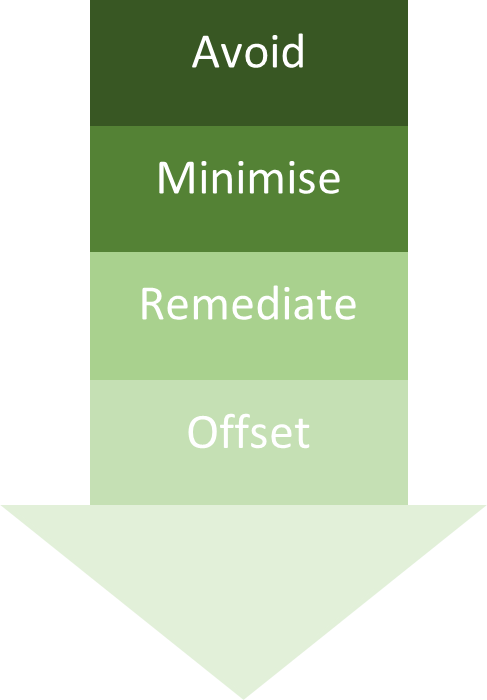This page covers the below sections:
See the Contents for all available Sustainability Hub pages.
What is Biodiversity?
Biodiversity comes from the term biological diversity. The Cambridge English dictionary defines biodiversity as “the number and types of plants and animals that exist in a particular area or the world generally.” (1)
Biodiversity encompasses all living things, from tiny microorganisms to huge mammals and everything in between; no matter how small, all species have an important role to play.
As well as the ecological value, biodiversity adds to cultural and economic value and increasingly, biodiversity and natural capital are recognised as integral to climate change in planning for a sustainable future and having an impact on business planning for net zero.
Although throughout Earth's history the climate has always changed, the rate of change is now significantly higher than it has been historically(2), and this has huge impacts on biodiversity and the ability for ecosystems and species to adapt. The result of this is significant changes in the resources that human life depends on, such as the availability of food and water.
Healthy ecosystems better withstand and recover from natural and anthropogenic (man-made) disasters, which means that greater species diversity is more likely to lead to natural sustainability for all life forms. This requires accounting fully for the impacts of our interactions with nature and ensuring that our demands do not exceed sustainable levels of extraction.
Read more about biodiversity.
Mitigation Hierarchy
The mitigation hierarchy is a decision-making framework to be used when planning new projects/developments.(3) It is designed to prevent any harmful impacts on the environment and biodiversity, resulting from anthropogenic (human) activities.
The hierarchy prioritises actions in order of effectiveness:
- Avoid – Where possible, avoid any impacts on the environment.
- Minimise – Where impacts cannot be avoided, they must be kept to a minimum, for example, by reducing exposure to or duration of the impacts.
- Remediate – Where the environment has been subject to human impacts, it should be restored and/or rehabilitated.
- Offset – If, after the previous steps have been utilised to their full potential, impacts still reside, offsetting may be used to compensate for the impacts elsewhere.
By following the hierarchical model, priority must be given to avoidance, followed by minimisation, then remediation and, as a last resort, offsetting. Find out more about biodiversity offsetting here.
What is Biodiversity Offsetting?
Biodiversity offsetting is a method of conservation whereby the environmental impacts that are unavoidable in one area, are compensated for elsewhere. A common example of this is planting trees, or reforestation, to offset carbon emissions.
There are advantages and disadvantages to offsetting.
Advantages include:
- It is better to make some effort to improve the environment than make no effort at all.
- Offsetting can have positive impacts on the environment in which it is undertaken.
- Offsetting can help to counteract human impacts on the environment.
Disadvantages include:
- Offsetting elsewhere does not solve the problem of harming the environment at the site of development and therefore ecosystems can still be damaged and even lost.
- Offsetting is not always successful; for example, when planting trees, some may not survive to reach maturity.
- It is very difficult to replicate natural ecosystems, it is therefore better to protect ecosystems in the first place. Offsetting tends to be very monoculture and therefore does not replicate the same ecosystem services. Find out more about ecosystem services.
- It can take many years for offsets to reach the desired effects. For example, in a 2017 study(4) on biodiversity offsetting in New South Wales, Australia, it was estimated that no net loss would not be achieved for 146 years.
- Offsetting projects must be monitored and managed effectively to ensure they are doing what they promise to do.
- Offsetting may lead to greenwashing if companies do not follow the mitigation hierarchy and instead of reducing their impacts, they pay to offset elsewhere.
As the mitigation hierarchy suggests, biodiversity offsetting should be used as a last resort and only utilised when impacts have been avoided, minimised and remediated as far as is possible. Whilst offsetting may be considered as an option, it must be remembered that offsetting does not tackle the underlying causes of environmental degradation due to human developments. Best practice is to limit impacts on the environment as much as possible first. If resorting to offsets, it is vital that a transparent and reputable scheme is used.
Resources
In 2003, the World Wildlife Fund (WWF), alongside other international Non-Governmental Organisations (NGOs), set up Gold Standard to manage best practice standards for climate and sustainable developments. Gold Standard has an offsetting guide of best practice, which is available to view on its website.
In 2020, the University of Oxford published The Oxford Principles for Net Zero Aligned Carbon Offsetting.
In 2021, the UK Government published a report on Achieving Net Zero – A Review of the Evidence Behind Potential Carbon Offsetting Approaches.
References
- Cambridge English Dictionary
- NASA Global Climate Change
- Phalan, B., Hayes, G., Brooks, S., Marsh, D., Howard, P., Costelloe, B., . . . Whitaker, S. (2018). Avoiding impacts on biodiversity through strengthening the first stage of the mitigation hierarchy.
- Gibbons, P., Macintosh, A., Constable, A.L., Hayashi, K., 2017. Outcomes from 10 Years of Biodiversity Offsetting.

